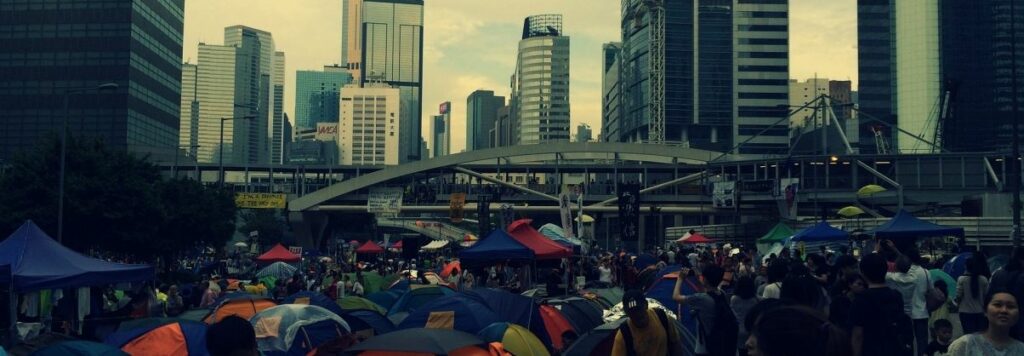
Street protests once again gripped one of the world’s busiest financial hubs, Hong Kong in early June following the government’s attempt to pass a controversial extradition bill that has been regarded as part of Beijing’s ambition to grow its influence in the territory. In scenes reminiscent of the Occupy Movement protests back in 2014, protesters besieged government buildings including the Legislative Council Complex (LegCo) in Admiralty and their action eventually paralyzed the Central district, the heartbeat of the city. Businesses, banking services as well as public transportation were brought to a halt as defiant protesters, mostly youths launched sit-ins and clashed with police officers several times. At some point, the protests attracted at least two million people in a single day, making it the largest since the handover of Hong Kong in 1997. While the territory’s chief executive Carrie Lam insisted that the bill is “necessary and sensible”, the latest round of protests have also threatened to further polarize the city’s society, especially among its middle class with some being less inclined in demanding for universal suffrage and independence.
The protests over the extradition bill came at a time of increased anger over continuous encroachment of the semi-autonomous territory by the central government in China. Critics have argued that the “one country, two systems” principle since the handover in 1997 has been undermined as Beijing had in the past ignored the views of the territory’s citizens on multiple issues including the selection process of a chief executive among others. With the extradition bill, some citizens of the territory have certainly felt that they have been pushed to the edge and the street protests could be their last stand against their diminishing freedom. As described by a Democratic Party’s activists, Martin Lee, the bill has emerged as one of the most serious threats to their freedoms and way of life.
The protests over the extradition bill came at a time of increased anger over continuous encroachment of the semi-autonomous territory by the central government in China. Critics have argued that the “one country, two systems” principle since the handover in 1997 has been undermined as Beijing had in the past ignored the views of the territory’s citizens on multiple issues including the selection process of a chief executive among others. With the extradition bill, some citizens of the territory have certainly felt that they have been pushed to the edge and the street protests could be their last stand against their diminishing freedom. As described by a Democratic Party’s activists, Martin Lee, the bill has emerged as one of the most serious threats to their freedoms and way of life.
Lam’s claim that the bill will effectively curb criminals from China seeking safe haven in the territory was also rebuked by activists who argued that it will be used by the central government in Beijing to target political dissidents in which they will face trial under a justice system where torture, forced confessions and arbitrary detentions are not unheard of. In a wider perspective, the continuous erosion of the territory’s autonomy also put the reputation of the world’s financial center at stake, making it “just like another Chinese city”. Apart from local activists, the protests also gained attention from foreign governments including the territory’s former colonial ruler, the United Kingdom as well as the United States. Both countries have spoken out against the violence that gripped the city with some lawmakers in the US urging Donald Trump’s administration to strip trade privileges for Hong Kong. In return, Chinese state-run media blamed the “west” for the chaos, alluding to US role in organizing the protests due to an ongoing trade war between the two giants.
Although Lam’s government had backed down and suspended the bill for now, protest movement leaders remained wary and called for it to be scrapped altogether. They have also vowed to continue the protests until she steps down. The tenacity of the protesters will be tested in the days to come as the government’s attempt to tone down the bill instead of a full withdrawal could result in the current stand-off being dragged on. While massive one-off protests are still highly likely, the probability of sit-ins as seen during the 2014 Umbrella Revolution should also be taken into consideration as protest movements might change their tactics in pressuring the government to throw out the bill. Disruptions that may paralyze the Central district also cannot be ruled out and eventually, the government might once again employ similar tactics to disperse the protesters by force, making the scenes during the 2014 Umbrella Revolution all too similar.
One country, two systems
As a constitutional principle laid down by Deng Xiaoping, the “one country, two systems” formula states that Hong Kong’s high degree of autonomy and way of life will be guaranteed for at least 50 years after the 1997 handover. Under the principle, both Hong Kong and mainland China will have separate government systems as well as own say in legal, economic and financial affairs including trade relations. In recent years however, the principle has come under increased encroachment from the Chinese government with the demand for universal suffrage by pro-democracy movements being largely ignored. A series of sit-in protests over the issue gripped the territory’s Central district in 2014 in what was later being referred to as the “Umbrella Revolution”.
Contributors
Chan Cheong
Senior Analyst and Office Manager Malaysia
Copyright Safeture 2019
